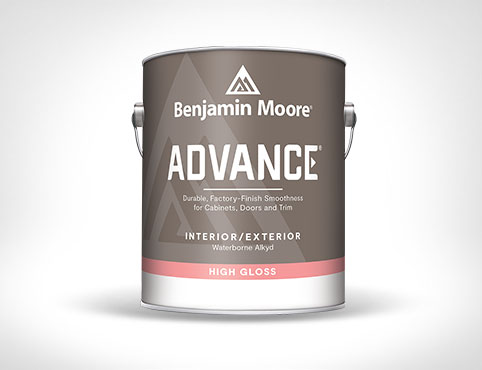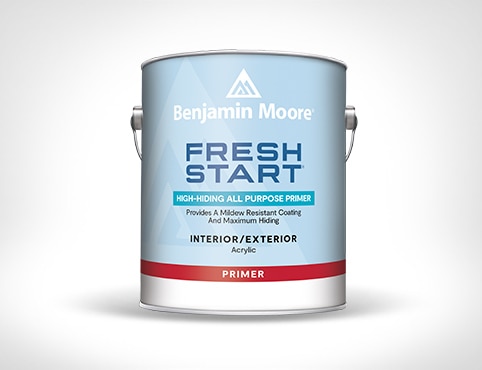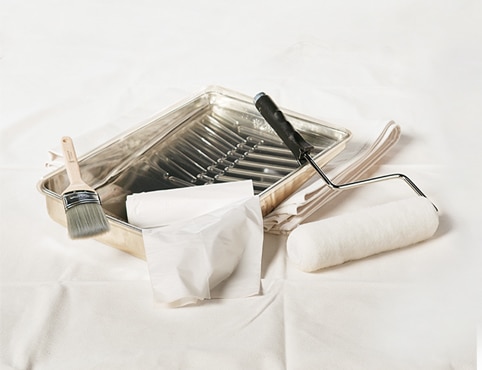11 PAINTING MISTAKES TO AVOID
Sometimes, there’s just no way around it—painting mistakes happen. And while you can fix most painting mistakes, the best case scenario is to avoid them in the first place.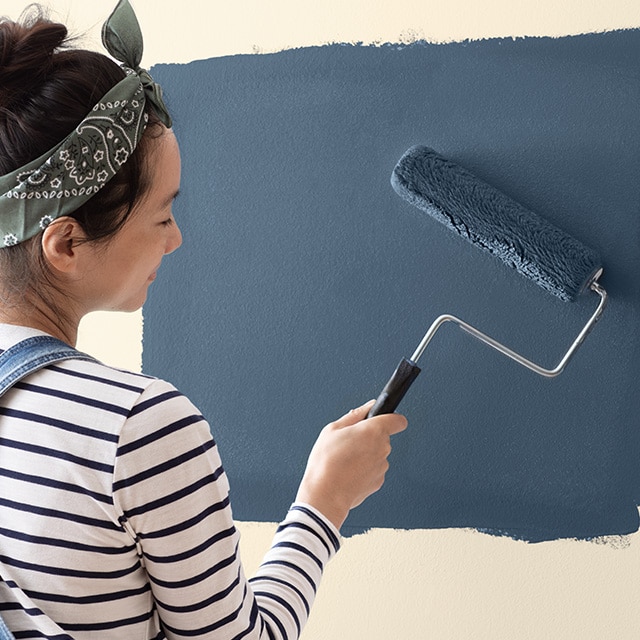
Whether you’re planning your next project or have already picked up a paintbrush, here are a few tips for avoiding 11 of the most common painting mistakes.
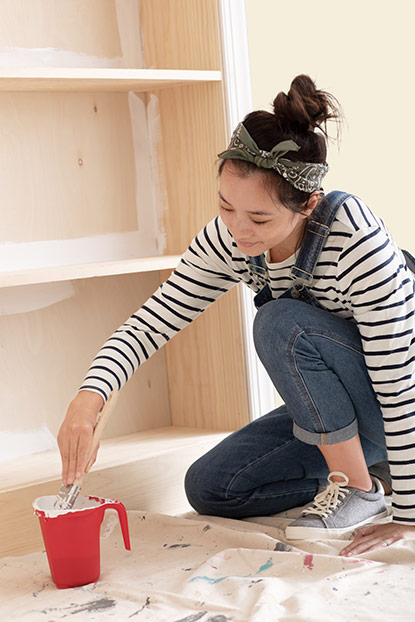
Mistake #1: The Color is Not What You Expected
The most common reason for color “surprises” is that varying lighting conditions, including artificial and natural light, can play a larger role in a paint color’s appearance than you might have anticipated.
Try the color first by investing in a color sample. Be sure to look at the color in different lighting conditions, which have a major impact on the paint color’s appearance.
Mistake #2: Improper Prep
You didn’t properly prepare for your painting project, which can cause delays or even damage.
To avoid this, create a plan and write out every step you will take to complete your project, including:
- Get the correct tools to do the job before you start painting, including the right roller covers, tape, drop cloths, and more.
- Be sure to clean the surface you’re painting thoroughly.
- Consider dry time between primer and paint coats to get a sense of your overall project duration. Look for this info on the can or the product TDS.
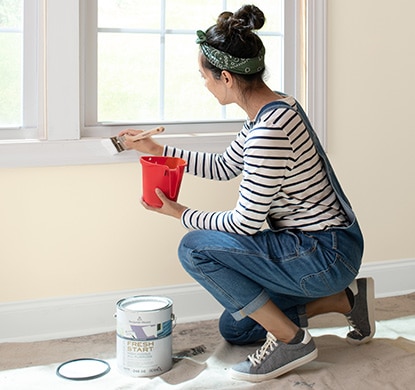
Mistake #3: Skipped Priming
Skipping primer may result in uneven or blotchy paint.
While many of Benjamin Moore’s paints are self-priming, we recommend a dedicated coat of a high-quality primer, like Fresh Start® High-Hiding All Purpose Primer. Primer is the best way to achieve a smooth finish.
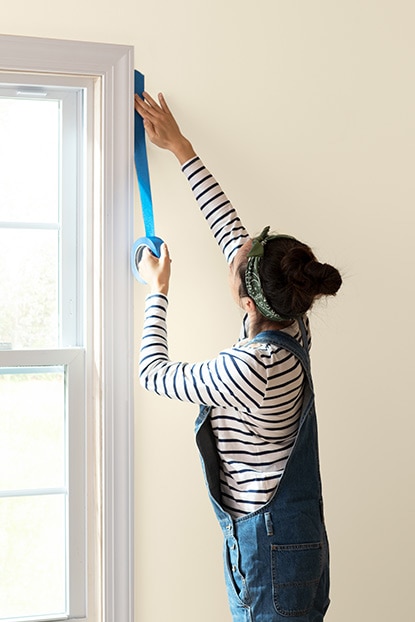
Mistake #4: Mistakes with Tape
When paint is applied too heavily, it forms a bridge along the tape border and can cause an uneven line. When you wait too long to remove tape after painting, you can peel paint off with the tape.
Always make sure you paint carefully and evenly along your tape line. Remove the tape before the paint is completely dry.
Mistake #5: Using Too Much Paint
Too much paint on your brush or roller can cause drips, runs, streaks, or other unwanted textures.
Avoid using too much paint with different techniques for different painting tools:
- Paintbrushes: Dip your paintbrush no more than 1 to 1½ inches into the paint, and lightly tap it on the sides of the interior of the can or bucket to remove excess paint.
- Rollers: Fill a tray to about a ½-inch depth of paint. After dipping your roller into the edge of the paint pool in the tray, use the textured roll-off area or a paint grid to remove any excess paint.
- Use the Gravity Test: Find the right amount of paint for your application tool by rotating it over your can, bucket or tray (wet always faces down for a brush). Let excess paint drip off before you begin painting.
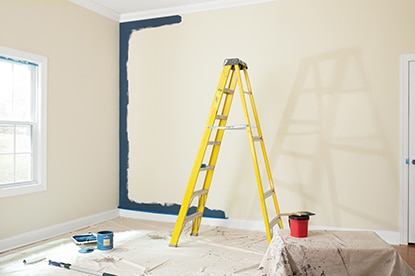
Mistake #6: Not Cutting in Correctly
Cutting in the edges and corners of the space you are painting can be tricky to get right, and requires a bit of practice. Bad cut-ins result in crooked lines or uneven edges.
Correctly cut in paint by following these steps:
- When cutting in the edges of your painting project, press a loaded angled paintbrush firmly along the surface roughly 2 inches from your desired border to apply a thick layer of paint in a line.
- Press the tip of the bristles to the edge or line you are cutting in, and move swiftly in the direction you are painting. Sometimes moving too slow will make creating a straight line more difficult.
- Go over the whole line once more to make sure the paint is evenly applied.
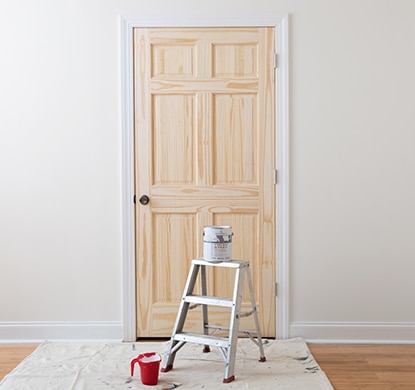
Mistake #7: Trying to Stretch Paint
Only painting one coat or using too little paint for the surface area you’re painting will make for an uneven, streaky or blotchy finish.
Attempting to stretch paint is usually a result of not having enough paint. Calculate how much paint you’ll need ahead of time. You shouldn’t need to put a lot of pressure on your application tools when painting—the paint should come off effortlessly.
Mistake #8: Skimping on Paintbrushes and Rollers
When using low-quality roller covers or paintbrushes, roller lint or brush bristles can end up on your wall, leading to an uneven paint job.
Go for high-quality painting tools for the best results.
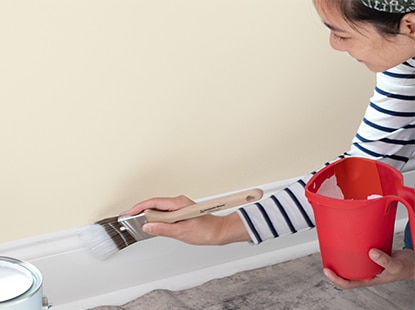
Mistake #9: Holding the Brush Improperly
Holding your paintbrush incorrectly is often a result of it being the wrong size. Your holding technique is important for applying an even paint job.
Choose the right size paintbrush by making sure the brush fits your hand. Your local Benjamin Moore® retailer will help you select the best paintbrush for you.
Mistake #10: Not Waiting for the First Coat to Dry Before Applying the Second Coat
After applying the first coat of paint, you didn’t wait long enough (the designated dry-to-the-touch or recoat time) before applying the second coat, resulting in streaks, peeling paint or uneven color or finish.
Look for the recoat time on the back of the can, which is typically one to two hours for most waterborne interior paint products. Remember, if part of a room is dry to the touch, that doesn’t mean the whole room is, so be sure to follow the can instructions on recoat time.
Mistake #11: Not Cleaning Up or Storing Paint Properly
Not cleaning painting tools, like paintbrushes or roller covers, can make them unusable for future projects. The extra money spent on premium applicators is a wise investment, but only if you can get several uses out of them.
Make sure you store your paint in a cool, dry place away from direct sunlight. Keep in mind that opened paint typically has a shelf life of two years, and possibly longer, when stored correctly. If you’re in the middle of a project or just haven’t cleaned your tools, wrap them in clear plastic wrap to not expose the paint to air.
Visit your local Benjamin Moore® retailer for help with all your painting needs. Find more tips in our How-To section.
Helpful Tip
If you plan to reuse paint, you can make touch-ups much easier and more accurate by labeling the can and the back of a light switch in a room you’ve painted.Label the light switch with:
- Brand of Paint
- Color
- Type or Product Name
- Sheen/Finish
Label the paint can with:
- Where/What You’ve Painted (room, wall, piece of furniture, etc.)
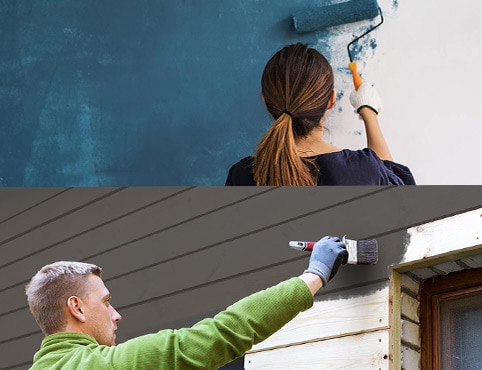
How-To and Advice
Need help doing it yourself? We’ve got you covered with step-by-step guides and best practices to make your next painting project a success.

